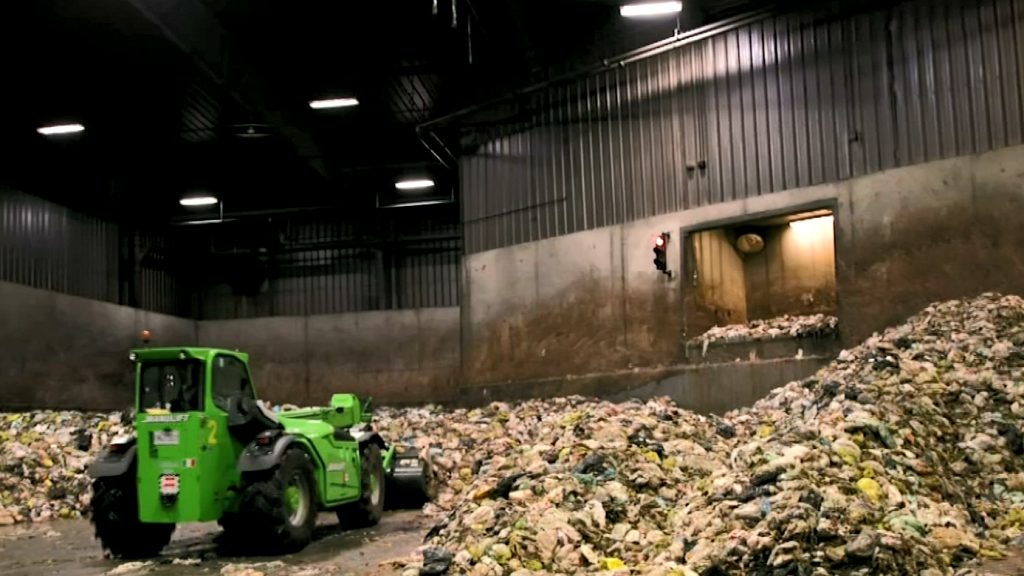Addressing the ‘crisis’ that is Ontario’s food waste problem

Posted January 20, 2020 6:03 am.
Last Updated January 20, 2020 6:09 am.
This article is more than 5 years old.
It’s Ontario’s two-million tonne problem: Prepared food being needlessly wasted with a large portion of it ending up in the province’s landfills.
But the problem doesn’t start there.
Mike Chopowick, director of policy and communications with the Ontario Waste Management Association, says almost half the food waste takes place before it even gets to your fridge or kitchen table.
“Starting from the farming process, the retail stage and then there is the food waste that people generate,” he says. “Food waste across Canada costs about $860 per person, so there is a financial incentive and there is the ethical issue of not using the food and feeding people that really need it.”
Feeding the hungry with some of that surplus food that comes from restaurants and food retailers is what Tony Colley is doing.
The Toronto entrepreneur founded B12Give, a mobile platform that redistributes hot food and take it to shelters within the hour. Colley says he realized how big of an issue avoidable food waste was for the city when he began working with a catering company. He says he noticed that hot food left over from events was discarded nightly and he wanted to find a solution.
“There is nothing like this in Canada which is why I decided to create this program,” says Colley. “Most of the rescue agencies work with manufacturers or producers and take food to a distribution centres and sort.”
There are about a dozen food rescue agencies across the country. Second Harvest is one of those organizations. The Toronto-based non-profit commissioned a world-first study in 2017 that shows the food waste realities of Canadians. The study was conducted by Value Chain Management and measured raw data from food industry practices rather than using estimates. It showed that more than half of the food produced in Canada is wasted and that the value of groceries landing in disposal sites and landfills is almost $50 billion.

All the food being sent to landfills is causing another challenge. Ontario is running out of space.
According to Nadien Kerr, manager of resource recovery within Solid Waste Management Services at the City of Toronto, in 2018, Toronto processed approximately 160,000 tonnes of Green Bin organic waste. Approximately 90 per cent of collected Green Bin tonnes are from residential sources such as homes, apartments and condos. The remaining 10 per cent is from the City’s non-residential customers, which include small commercial businesses as well as schools, city buildings, and charities. As for larger businesses and commercial operations, they have private collection not done by the City.
CityNews reached out to the Loblaw Corporation that owns over 2,000 grocery stores across Canada to see how they manage their food surplus. In a statement the company says, “currently, all of our Toronto corporate stores and many of our franchised locations work with local organizations to redistribute food to help people facing food insecurities in their community.” Adding that “in 2019, we also partnered with the Flashfood app, which provides customers the opportunity to purchase food items nearing expiration at a reduced price of up to 50 per cent off at select Loblaw grocery stores. Through this initiative, 4.6 million pounds of food was diverted from landfills last year.”
But experts like Chopowick say more needs to be done, calling food waste a “crisis” in the country.
“It’s our understanding the Ontario government has said they’re going to introduce a proposal to implement some sort of disposable ban on food waste,” he says. “We’d have to consider who the ban would apply to and what type of food would be covered by the ban and whether or not you’d want it across the province or just in large cities. In most cases, it usually takes four to five years to phase it in and implement it.”
As for the issue of food waste that comes from prepared food, Colley says he doesn’t think food retailers can ever become a zero-waste operations, but reducing the amount of food waste and reusing it to help those in need still helps.
“We all have the same mission which is food rescue. In the past two years I’ve rescued over 10,000 pounds of food which has served about 7,800 people across the city. Food retailers will never become a zero-waste facility. We know that but what I can do is to help them become a zero avoidable food waste facility.”








